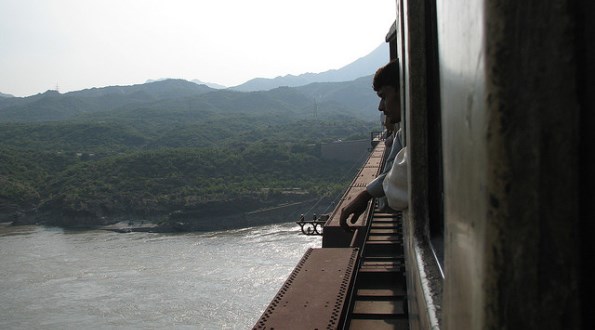BECOME A MEMBER
>JOIN
Discourse about Water in South Asia Is Increasingly Securitized

Discussion about water in South Asia – in particular the shared rivers of the region – is vociferous, antagonistic and increasingly associated with national security.
Chatham House's recently published report "Attitudes to Water in South Asia" lays out the evidence based on almost 500 interviews conducted in 2013 as part of a Chatham House project by five local institutes with a range of water experts, policy-makers and decision-makers from NGOs and the private sector. It focuses on five South Asian countries: Afghanistan, Bangladesh, India, Nepal and Pakistan, and two river systems: the Ganges-Brahmaputra-Meghna and the Indus-Kabul basins. All the countries face similar challenges relating to these rivers.
Recommendations:
1. Improve domestic water management.
Poor access to water within countries raises regional tensions. Improving water management is imperative both in itself and as a means of easing these tensions.
Enhance coordination between relevant ministries connected to water, such as those for agriculture or mining, and ensure that policy on water is coordinated with agriculture and energy policies.
Create domestic ‘visions’ for water usage to enable transboundary negotiations to be driven by demand as well as supply.
Enhance understanding of the nexus between food, energy and water to enable pricing of electricity, and ideally water, to better reflect social and environmental costs.
Disseminate examples of best practice to facilitate broader understanding of what can be achieved and, importantly, how it was achieved.
Shift management of water at the local level to the communities themselves. Current top-down approaches frequently fail to meet communities’ actual needs. This approach would enable a more holistic understanding of cross-regional commonalities, encouraging a focus on sustainability, as well as shared cultural and social approaches towards water.
Ensure that water-related policy documents, examples of best practice and so forth, are translated into local languages.
2. Enhance data collection and expand data-sharing.
Establish nationally accepted standards of data measurement and, in time, regionally accepted standards.
Improve the availability of consumption data to help guide policy-making.
Enhance data-sharing, in particular in relation to floods and droughts. Streamline processes by which flood and drought data are cascaded to relevant local agencies.
Publicize existing data-sharing agreements.
3. Ease demand for water.
Incentivize the cultivation of less water-intensive crops.
Encourage less water-intensive methods of irrigation through pricing and/or through the promotion of cost-efficient technologies.
4. Boost supply of water.
Where appropriate, focus on local rainwater-harvesting projects.
5. Connect cross-country discussions about water to the uses of water, rather than to its abstract supply.
To build understanding of shared challenges, as well as opportunities, connect debates about water to issues such as climate change; disasters (and disaster warning and preparedness); energy; environment and ecology; fisheries; food, agriculture and livelihoods; groundwater management; health, sanitation and water-borne diseases; navigation; tourism; urbanization.
Enhance and expand existing cross-regional dialogues both on local approaches (such as watershed management) and on macro-level basin-wide management.
Expand dialogues beyond technical experts. At present technical dialogues fail to garner political buy-in. Media, civil society, government and politicians need to be engaged in water challenges.
6. Revisit existing treaties and agreements or focus parallel discussions on emerging issues.
Ensure treaties address technological advances, environmental factors and climate change.
Ensure new treaties have built-in third party or mutually agreed arbitration clauses.
7. Enhance engagement between decision-makers at state/provincial level in India and Pakistan with their counterparts in neighbouring riparian states.
8. Build the capacity of water policy-makers and international negotiators in Afghanistan, Nepal and, to a lesser extent, Bangladesh, and at state/provincial level in India and Pakistan.
To read the recommendations on the Chatham House homepage, please click here.
For the executive summary, please click here.
To download the entire report, please click here.
Photo courtesy of Gerardo Diego Ontiveros.

